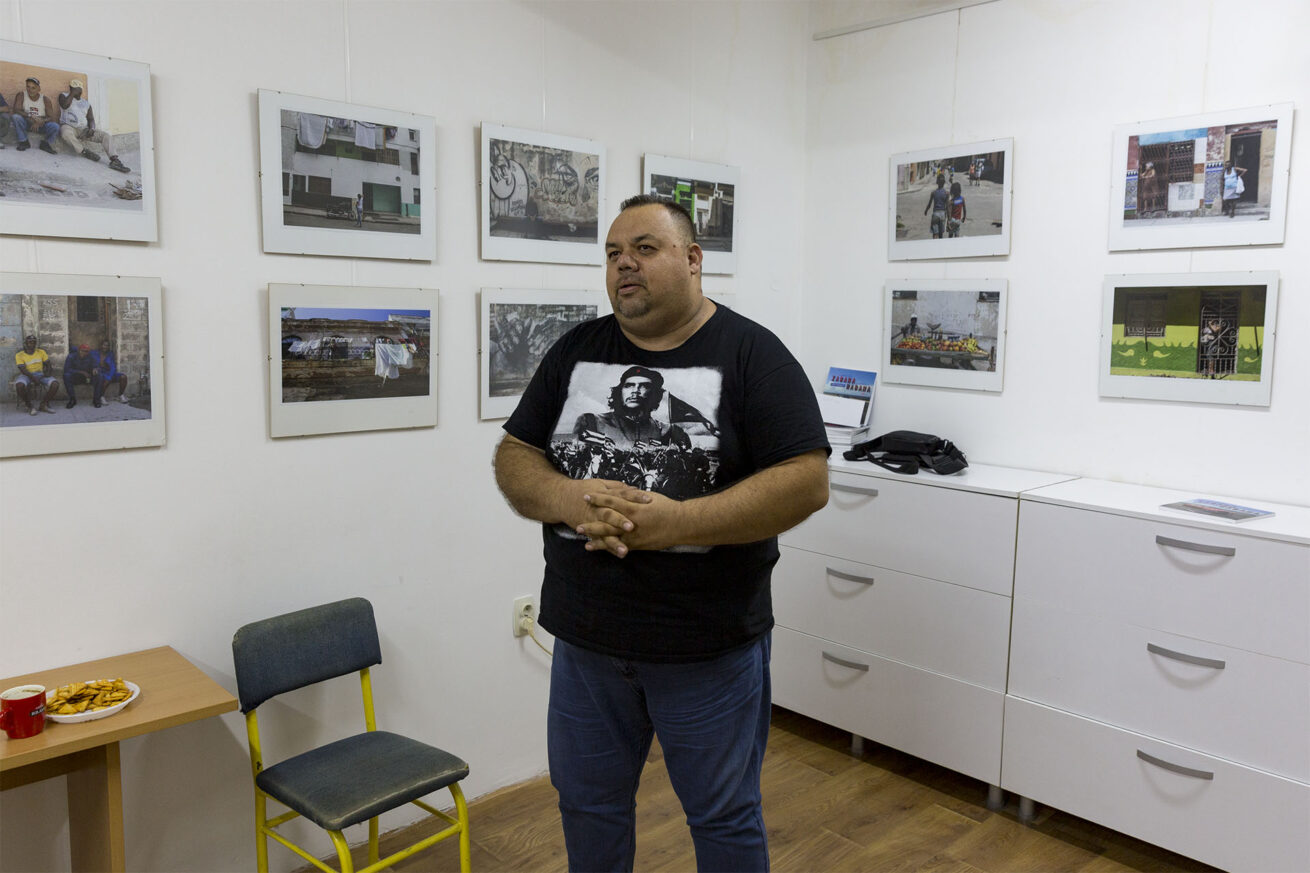On August 30 (Friday), a promotion of the new work of the author Roberto Brsakoski, “Life in Havana” was held in the premises of Photo Club Kumanovo. An exhibition of his photographs was also opened with the promotion of the book.
Roberto Brsakovski, born in Skopje in 1970, is a multifaceted individual — a photographer, philosopher, and travel writer. Through his photography, he conveys his unique philosophy and perception of urban environments, capturing the beauty, nature, mood, people, and settings that define them.
The famous critic Vladimir Plavevski will write about Brsakoski’s book:
Roberto Brsakoski, born in Skopje in 1970, is a familiar figure in our Macedonian photographic community. A graduate economist, he has been actively engaged in photography since 1985, becoming a member of the “Elema” Photo Club in Skopje in 1994. Over the years, he has showcased his work in more than 50 national and international exhibitions, earning several awards. In 1995, he made his mark as an author with a solo exhibition of black-and-white analogue photography titled “Life,” held at the Exhibition Hall of KIC in Skopje. A decade later, in 2005, he presented his second solo exhibition featuring analog black-and-white photographs, this one titled “Loneliness.”
His photo monograph, “La Vida De La Habana,” is a poignant example of capturing the humanitarian and social essence of the city, presenting a distant Cuba, specifically through Havana. Roberto Brsakoski’s work unveils a world that, in many aspects, feels unfamiliar and even strange, showcasing his unmistakable photographic insight into the socio-cultural milieu. This perspective is conveyed through his use of color and digital vision.
Brsakoski approaches this task with surprising ease, leaving a lasting impression on anyone who explores this remarkable photo monograph. When asked about his affinity for Cuba, adorned in an impressive T-shirt featuring the iconic image of Che Guevara, Roberto explains that Che Guevara and Fidel Castro are his idols. He admires their integrity and resistance to external opinions and actions.
Influenced by the impactful documentary “Buena Vista Social Club,” which revealed the unique spirit of the Cubans through their music, Roberto embarked on a two-week journey to Havana in April 2017. Armed with his camera, he documented his experiences through the constant firing of his “Canon.” The people of Cuba take center stage in almost every frame, portraying ordinary individuals in diverse environments that, for us, are characterized by their colonial style that transcends time and space. These impressions come alive through the vibrant pages of the captivating photo-color monograph, “La Vida De La Habana” (Life in Havana).
The photo monograph “La Vida De La Habana” is thematically and photographically divided into four sections, each featuring thirty color photographs. These sections are titled “People,” “Streets,” “Vehicles,” and “Architecture.” The people of Havana are a consistent presence across all thematic units, embodying Roberto’s concept of the indomitable spirit of the Cuban people.
Visual aspects and composition serve as dominant photosymbols in his photographs, creating a narrative that unfolds the life of the Cubans in Havana. Through these images, the symbolism of existence in the given social-political conditions comes vividly to life before us.
The “People” segment, initiating this photomonograph, stands out as the most striking part of the book, offering a raw entry into the author’s visually rich narrative. Roberto captures the people of Havana outdoors, on the streets, immersed in their captivating environment, which serves as the current social backdrop of the city.
During his stay, Roberto couldn’t venture into their homes, yet his photographs on the streets reveal a compelling portrayal of the social status of Havana’s inhabitants. The city’s walls serve as canvases for murals, reflecting the street artistic impulses around which the people of Havana engage in daily life—walking, talking, negotiating.
Roberto predominantly uses a normal lens, occasionally opting for a wide-angle lens and, infrequently, a light telephoto lens. The scenes depict people shopping in closed shops adorned with Che Guevara effigies wrapped in worn clothes bearing the inscription “Fidel Castro.” Elderly individuals with faded eyesight sit on doorsteps of houses with peeling facades, engaging in activities like selling exotic fruits or playing dominoes on makeshift tables. Rusty carts and broken old televisions become makeshift seats, while some individuals, perhaps military veterans, sit in wheelchairs, gazing into the distance—whether at the past or the future.
These images portray people on the edge of social existence, each one seemingly waiting for something. Almost everyone captured by Roberto is engaged in some form of smoking, while women, holding mobile phones or crutches, add to the diverse scenes. Peeling walls adorned with graffiti complete the compelling tapestry of Havana’s social life.
The photo segment “Streets” shows us the typical streets of Havana, which, to our surprise, are not burdened with traffic jams, but are enriched with cars of museum value. Old cars, of American manufacture, in a variety of colors, still parade through the streets of Havana, parked in the narrow streets. And some motorbike with its proud owner.
The “Vehicles” photo segment impressed our photographer with their antique value and the fact that they are still in excellent driving condition. Roberto is proud, as he drove a working vintage 1953 Chevrolet Impala Convertible, which he drove around Havana to realize that his dream had come true…
When I was in Australia, to visit a vintage car show I had to pay 25 Australian dollars. Photography of the exhibits was prohibited! And when I wanted to take a picture of an old “Ford K” in the parking lot, the owner demanded that I pay him! I’m sure Roberto didn’t get paid by anyone to take pictures of the vintage cars roaming the streets of Havana. The owners are proud that for them time stopped even before the revolutionary emergence of Castro and Guevara. There are also motorbikes, and with motorbike trailers that we haven’t seen in a long time, all lit up and clean enough to be photographed with their owners, who are taking pictures of them to prove that they have something to show for it.
The “Architecture” photo segment showcases the architecture of Havana, from their impressive Parliament (IL CAPITOLIO) and Theater Building to the already old, neo-colonial buildings that are in a state of external ruin, worn away by time and events. The greater number of buildings, to show them in their grandeur and ruin, Roberto photographs them in a vertical form, an indication of their grandeur and grandeur. Among the colonial buildings there is a modern multi-story beauty. And in front of almost every building, as a photo decoration, there are old cars with bright colors, and in front of the granapés, there are people waiting for, most likely, food items. In a small square there are axes and a tank as a sculptural artifact that must have played a certain role in the Cuban Revolution. The last photo is the beach in Havana, as a metaphor for the mourning of a bygone time, people and events that still exist in a contemporary globality of human entropy. When you put together this impressive photo monograph by author Roberto Brsakovski you will understand what the author means – I see and draw with light to tell my story of ‘Life in Havana’, La Vida de la Habana.”
The event commenced at 19:30, offering guests a festive atmosphere filled with music. Attendees were treated to an insightful recounting of the book’s creation, providing them with a deeper understanding of the project. Photos from the event are displayed below.







